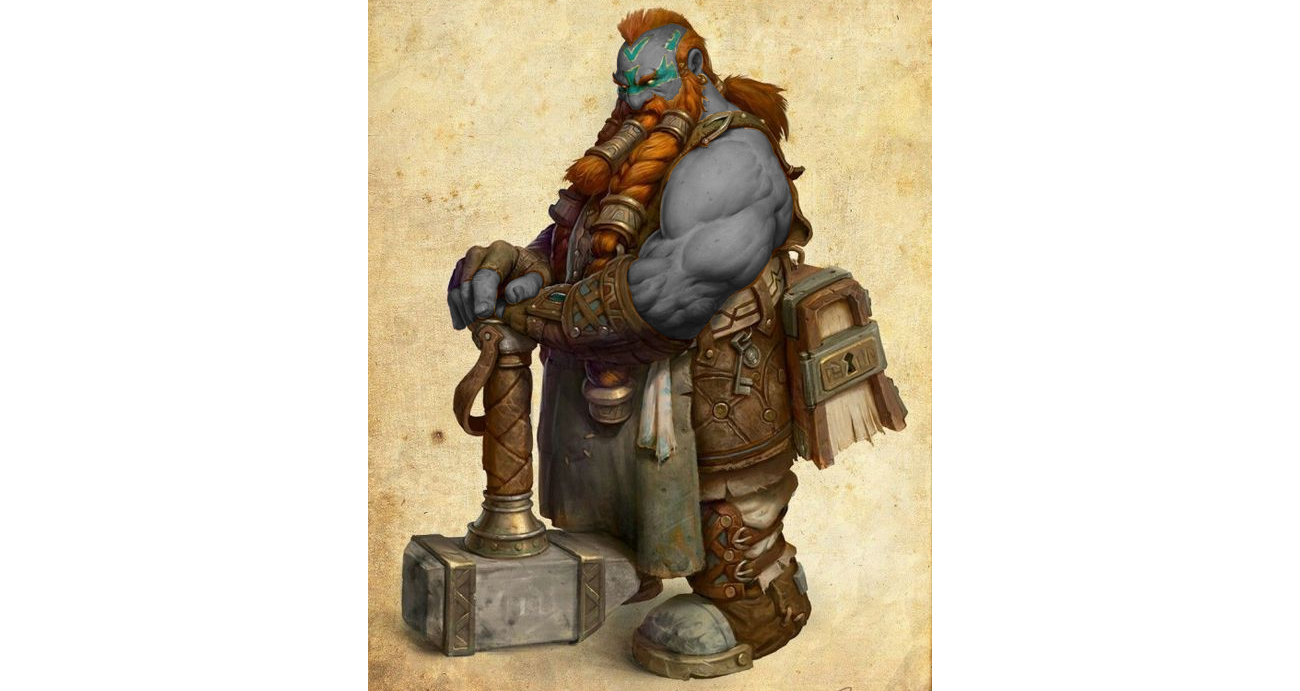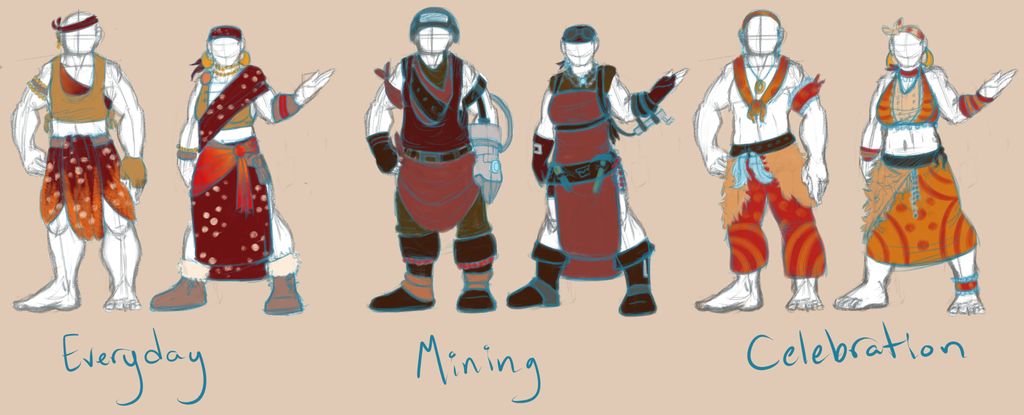Dwarves
A.K.A. "Dzudze"
"We Dzudze are perfect creatures. You'll never find a longer-lived, more advanced, sturdier, and more honorable being in this rocky world." - Granek Strongmantle, Dwarven Ambassador to Northern Rimor, as he was being arrested for public intoxication and urination.
"The smallest pebble was once the biggest stone, the biggest stone was once bigger." - a proverb among Dwarves, perhaps referencing the history of their kind
Basic Information
Anatomy
Dzudze have dark gray skin, large eyes, and strong hands. Their arms are longer than their legs which allows them to walk on all fours. They stand only 1.4 meters tall, but they have enough bulk to weigh more than a human. Dwarves have bits of minerals growing out of their skin, and the older ones have skin which is more like stone than flesh.
Genetics and Reproduction
Dzudze reproduce at a much slower rate than humans, averaging being able to conceive once every three years. Their gestation period is around eighteen months and tends to produce twins or triplets.
Growth Rate & Stages
Newborns are able to walk within moments of being born but tend to cling to their mother's backs for longer travels for convenience. After a month or two, the child is able to feed and take care of basic tasks. After one year, the child is able to speak and forage for food itself. Around the age of three, the child is able to contribute to the family and takes a role in life. Around the age of fifty, the dwarf is considered an adult.
As dwarves grow older, they have a magical transformation. With every passing day, they become more stone-like. Their skin turns to stone, their organs calcify, and their bodies become more rigid. By the end of their lives, they may become more stone than flesh, and those unlucky enough to become fully stone before they die become golems. Using any form of magic speeds up this painful process.
Ecology and Habitats
Suited for subterranean ecosystems, dwarves often inhabit caves within mountains and large underground areas which are not apparent to the surface world.
Dietary Needs and Habits
Dwarves subsist mostly on fungi and meats, but are also able to consume plant matter, although with much dislike.
Additional Information
Social Structure
Each member falls into a caste, in which they remain for life. The hierarchy of castes is as follows, with higher being a more honorable caste.
- Noble/Gold Caste (Zlato)
- Warrior/Blood Caste (Krv)
- Smith/Fire Caste (Ogan)
- Mining/Stone Caste (Kamen)
- Servant/Hand Caste (Raka)
Facial characteristics
Their face is very similar to that of a humans, although with larger eyes and considerably more facial hair. Even women have a bit of a beard.
Average Intelligence
Similar to humans, if maybe a slight bit more intelligent. That's what they all say, at least.
Perception and Sensory Capabilities
Large eyes allow the dwarves to see in low light conditions, although their vision is less precise in determining color than humans. Their magical sense of smell allows for unparalleled scent detection among the sentient races and allows them to smell things which would be almost impossible to detect by other means. Some dwarves with the best noses say they can even smell ore veins.
Civilization and Culture
Naming Traditions
Dwarven names typically have many hard consonants and are almost always two syllables long. Dwarves are given only a given name and have a caste ranking and clan name combined in place of a last name. Clan names are not determined by family, but rather by cultural group.
Example: a dwarf with the given name "Hegoch" belonging to the Ogan caste (fire/smithing) belonging to a clan known as Istamen (east stone) would be known as Hegoch na Oganistamen, (Hegoch of fire caste Istamen). Further specification would be given in the form of listing one's parents: Hegoch na Oganistamen, son of Gokren na Oganistamen.
Beauty Ideals
Those with the longest beard are often considered the most beautiful among the dwarves.
Relationship Ideals
Dwarves often mate for life, although this is not a rule. A dwarf may engage with other partners, but when children enter the picture, both parents are usually focused on the children and the other parent for the rest of their lives.
Average Technological Level
The dwarves seem to be always one step ahead of the other races with technology. They have many ideas, but they are never shown to the surface until they are perfected and used to full advantage by the dwarves. Their creations mean as much to them as their children, which is perhaps why they may take years on a single creation and become overprotective of it.
Major Language Groups and Dialects
Gazik is the term for the dwarven language. It is highly detailed and very structured. The language is difficult to make sound beautiful, but it serves its purpose.
Common Dress Code
Image by: SlugBurger
Culture and Cultural Heritage
Dwarves hold four things almost universally in high regard: honor, beards, gold, and alcohol in that order. Most of these can be explained easily, but the beards are a bit of a mystery. They often imply status and honor, as they are only cut as a punishment. There may be some more behind the beards unknown to the outsiders.
Common Customs, Traditions and Rituals
As a rite of passage, young dwarves undergo the Kreira (meaning: "to create") to enter adulthood. This varies by clan, but usually involves the search and gathering of raw metal and the forging of a metal armor piece or ornament. The oldest dwarf determines the caste of the dwarf based on their performance.
Common Taboos
Beards are a symbol of honor among dwarves, with the styling and ornaments made in the beard representing specific details about the dwarf. Therefore, cutting the beard is reserved only for dwarves who have committed grave crimes or have brought dishonor upon themselves or their clan. A beardless dwarf is never to be trusted.
History
Lacking their own magical talents, the gnomes created the dwarves using themselves as a template. Bigger, stronger, and more magically attuned, the dwarves became the second race to set foot on Vallonde. On their own, they were able to discover and harness magic inaccessible to their forebears. Architecture and engineering, aided by magic and the natural talent of the dzudze, reached new heights. Still, the dwarves were not the perfect creation the gnomes had hoped they would be. Turning to stone over the course of a lifetime was a fate unwanted by the dwarves, and they sought a cure for their affliction. They found no help from their creators and turned to find a solution on their own. The gnomes feared they would lose control of their dwarves and, using superior technology, subjugated them. For centuries, the dwarves existed as little more than magic-capable servants for their creators and lived under their thumb.
Historical Figures
See Predci
Interspecies Relations and Assumptions
Hate elves.
Remove these ads. Join the Worldbuilders Guild










Comments